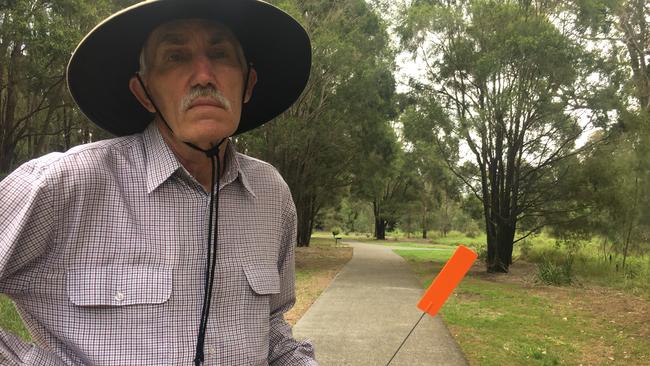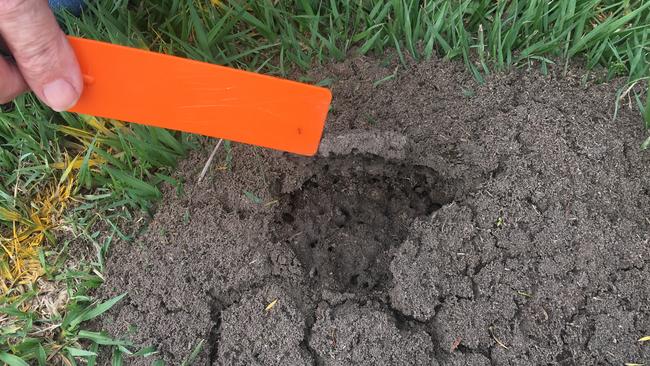Fire ants take Logan Motorway to spread along ‘hot spot’ corridor
LOGAN has been named a fire ant hot spot, with Biosecurity Queensland saying the city was in a “hot spot corridor” and without treatment the infestation could spiral out of control with no point of return.
Logan
Don't miss out on the headlines from Logan. Followed categories will be added to My News.
LOGAN has been named a fire ant hot spot.
Biosecurity Queensland fire ant chief John Jordan told Logan City Council the city was in a “hot spot corridor” and without treatment the infestation could spiral out of control with no point of return.
Logan Motorway was pointed out as a major fire ant area along with four other sites between Logan and Ipswich.
But, according to Mr Jordan, the state was focusing on a target area west of Ipswich before moving east.
He also said there was no plan to speed up treatment in Logan and said residents would have to be patient.

Logan fire ant spotter Stuart Webber said the city needed to be a priority area as infestation in parks had doubled this year.
He said parks bordering waterways or on flood plains were breeding grounds.
In Riverdale Park at Meadowbrook, Mr Webber said there were now 35 nests compared to 16 in 2017.
“There are a dozen nests still awaiting treatment and council is having to interrupt maintenance schedules to avoid disturbing the nests before treatment by Biosecurity Queensland,” he said.
“Given the possibility of a child being bitten and anaphylactic shock which may result in death, our parks need to be given priority in terms of treatment and surveillance.
“Treatment is the responsibility of Biosecurity Queensland but surveillance lies with us all.”
But parks were not the only domain of the six-legged creature.

Mr Jordan said development sites and cleared land attracted the ants. “To deal with this and the high-growth in southeast Queensland, government has to work closely with the community and local councils,” he said.
“If the community can tell us where the nests are, we can kill the ants.”
He said Biosecurity Queensland could also prosecute developers who failed to comply with fire ant restrictions.
Cr Trevina Schwarz, whose electorate covers high-growth areas such as Flagstone and North Maclean, said people had become complacent about reporting fire ants because the process of getting an inspection and then extermination took too long — sometimes up to 12 weeks.
Cr Phil Pidgeon called for developers to get compliance certification as part of the development approval process.
Mr Jordan said the state was also considering issuing more licences to third parties, and possibly councils, to speed up extermination.
He said “self-treatment” often backfired. “We will start with a few pest controllers because we have to negotiate with those who regulate the growth chemical permits and then we will have to teach the controllers how and when to treat.”

Acting mayor Cherie Dalley said the council should not have to pay to do state government work.
“Who’s paying?” she asked. She also wanted to know if councils would be reimbursed for any work done o behalf of Biosecurity Queensland.
Last year, the state Agriculture department was questioned over its lack of success in eradicating fire ants but was eventually successful in securing $411 million in federal funds to continue its program for 10 years.
There have been six incursions of fire ants in Australia. Five were in Queensland and one at Port Botany in New South Wales. Brisbane Port and southwest of Brisbane were infected in 2001.
Since then, the government has eradicated the ants at Brisbane Port but has been unable to stop them spreading to Logan, Redland, Ipswich, Scenic Rim, Gold Coast and Lockyer Valley.


